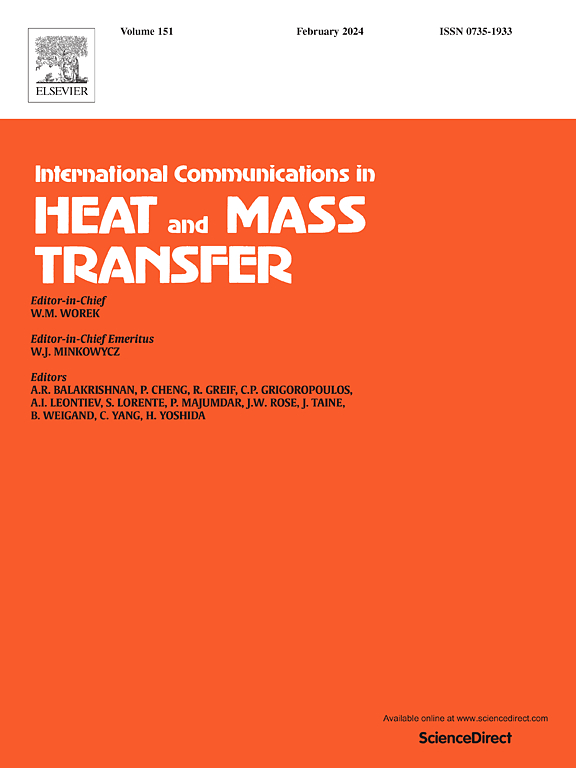Spread dynamics and heat transfer mechanism of tunnel spill fire under longitudinal ventilation
IF 6.4
2区 工程技术
Q1 MECHANICS
International Communications in Heat and Mass Transfer
Pub Date : 2025-03-23
DOI:10.1016/j.icheatmasstransfer.2025.108882
引用次数: 0
Abstract
This study systematically investigated the effects of longitudinal ventilation on tunnel spill fires within a velocity range of 0 to 2.0 m/s, using scaled model tunnel experiments at a ratio of 1:8. The research described the dynamic spreading process of spill fire in detail, revealed the stress mechanism of the fuel layer, and highlighted that heat feedback was the critical factor controlling the spread area of the spill fire, despite an increase in ventilation velocity enhancing wind force. The spread process of tunnel spill fires was divided into initial spread, shrinking, quasi-steady burning, and extinction stages. The research also uncovered the coexistence of natural and forced convection within tunnels, highlighting the substantial impact of natural convection on forced convection. On the upwind side, low wind velocities increased the combustion rate, whereas high velocities had the opposite effect. Conversely, on the downwind side, the interplay between natural and forced convection led to an initial decrease in combustion rate at low wind velocities, followed by an increase as wind velocity increased. This study overcame the constraints of traditional unidirectional spread experiments and established a new method for the study of simultaneous bidirectional spread of spill fires in tunnel environments. These findings yielded novel insights into the behavioral characteristics of tunnel spill fire behavior under longitudinal ventilation.
求助全文
约1分钟内获得全文
求助全文
来源期刊
CiteScore
11.00
自引率
10.00%
发文量
648
审稿时长
32 days
期刊介绍:
International Communications in Heat and Mass Transfer serves as a world forum for the rapid dissemination of new ideas, new measurement techniques, preliminary findings of ongoing investigations, discussions, and criticisms in the field of heat and mass transfer. Two types of manuscript will be considered for publication: communications (short reports of new work or discussions of work which has already been published) and summaries (abstracts of reports, theses or manuscripts which are too long for publication in full). Together with its companion publication, International Journal of Heat and Mass Transfer, with which it shares the same Board of Editors, this journal is read by research workers and engineers throughout the world.

 求助内容:
求助内容: 应助结果提醒方式:
应助结果提醒方式:


